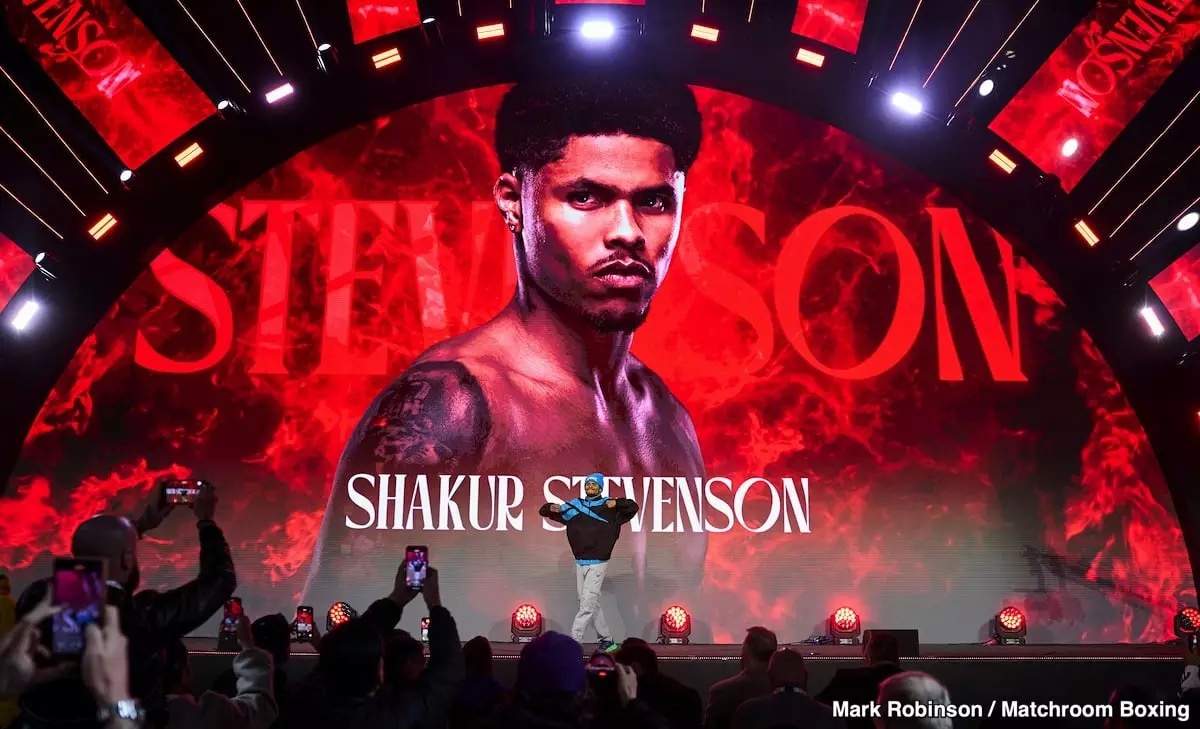In the world of professional boxing, ambitions often clash with the harsh realities of matchmaking politics, leading to frustrations that echo within the hearts of fighters. Shakur Stevenson’s discontent with Vasily Lomachenko’s refusal to fight is a poignant example of unmet aspirations. The two-time Olympic gold medalist has positioned himself as a promising talent in the lightweight division; yet, he feels slighted by Lomachenko, a figure he once idolized. After moving up to lightweight, Stevenson hoped for a competitive showdown against the legendary former champion. Instead, he’s left grappling with feelings of disappointment, believing that Lomachenko not only avoided the fight but also dismissed him as a worthy opponent.
Throughout boxing history, we’ve seen how perceptions shape opportunities. Lomachenko, revered for his technical prowess and accolades across multiple weight classes, possibly viewed Stevenson’s then-nascent popularity as a liability. For him, a contest with a fighter lacking extensive mainstream acclaim may have appeared less financially sound. However, the question remains: should legacy and competitive spirit outweigh commercial viability? Stevenson’s dissatisfaction suggests the answer is a resounding yes.
Legacy versus Popularity: A Miscalculated Battle
Stevenson’s battles don’t just take place in the ring; they extend to the narratives that define fighter legacies. He perceived Lomachenko’s decision to evade a match as a betrayal of sorts, impacting his regard for the Ukrainian boxer. While Lomachenko has enjoyed a stellar career, his hesitance to engage with upcoming stars might ultimately tarnish his legacy. Instead of welcoming the challenge of a rising boxer who idolized him, he opted for the safer route, perhaps worrying that a loss would jeopardize his standing.
Unlike Lomachenko, who has had the privilege of facing high-caliber opponents such as Devin Haney and George Kambosos Jr., Stevenson’s recent fights have lacked significant spotlight—his battle with Josh Padley nestled on an undercard, far from the glow of headlining events. This lack of visibility can perpetuate a vicious cycle where rising stars find it challenging to gain recognition while established champions remain shielded from risks. In this arena, Lomachenko’s avoidance of the bout with Stevenson may demonstrate a reluctance to engage younger, ambitious fighters who could jeopardize his legacy.
The Subdued Symphony of Style
Analyzing Stevenson’s boxing style unveils another layer to this dilemma. His defensive skills are commendable, yet his offensive strategy often lags. This shortcoming could have deterred Lomachenko from accepting the fight, as he might feel that a boxer lacking in offensive creativity will struggle against his multifaceted style. Lomachenko’s agility and offensive power, even at 37, could present overwhelming challenges for Stevenson, making a potential fight more perilous than it would be for the seasoned champion.
The current boxing landscape often amplifies narratives surrounding boxers’ styles, leading to conversations about what makes a fighter truly great. The technical mastery of Lomachenko juxtaposed with Steven’s reliance on defense creates significant intrigue, but not when one factor appears to significantly overshadow the other. In Stevenson’s case, a fight against Lomachenko could have provided him an opportunity to prove that he is more than just a defensive technician, and that he can stand toe-to-toe with greatness—something he is being denied.
The Frustration of Timing
As Stevenson expressed during conversations with journalists, the timing of opportunities in boxing rarely aligns ideally for every fighter involved. He recognizes that some fighters, such as Tank Davis, hold the reins due to their popularity and marketability, thus determining when fights will occur. Yet, the sense of having an idol try to sidestep a confrontation feels uniquely painful. Vulnerabilities surface when the perceived opportunistic nature of fighters forces them to choose fame over sport, turning boxing from a monument of integrity into a chess game filled with strategic retreats.
The age of “what could have been” looms large in the minds of both fans and fighters, especially when one considers how the dynamics within the sport can stifle competition. Stevenson’s hope for a showdown with Lomachenko is emblematic of a larger struggle for emerging talents— to find opponents willing to take risks for legacy, not just for their pockets. The boxing ring is not merely a physical battleground; it symbolizes dreams, aspirations, and sometimes, the bitter taste of unfulfilled potential.

